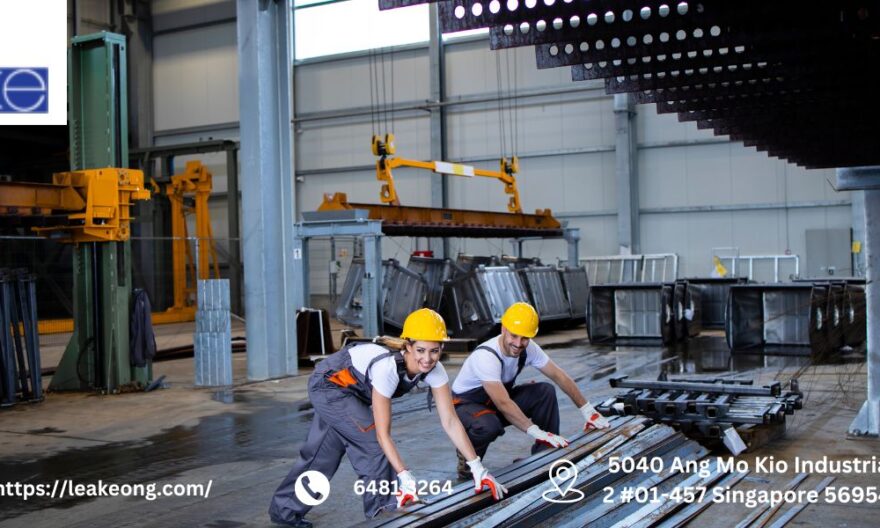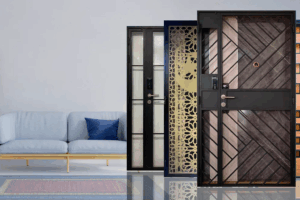
Steel sits at the heart of modern commercial construction. As the demands of the building industry grow, so does the need for stronger, faster, and more flexible materials. Steel structure fabrication answers that call.
From warehouses and hospitals to offices and hotels, steel structures carry weight—literally and figuratively. They form the core of buildings that need to be safe, efficient, and future-ready. But the value of steel goes beyond its strength. Fabrication brings accuracy, speed, and long-term reliability to commercial projects that cannot afford mistakes.
Let’s look at why steel structure fabrication continues to lead the way in commercial construction—and why it’s likely to remain that way.
Strength That Supports Bigger Ideas
Commercial buildings have big jobs to do. They hold crowds, carry heavy loads, and must stay safe under pressure. Steel delivers the strength needed to support all of this. It carries weight without bending or breaking and forms the skeleton for buildings that reach wide or tall.
Unlike concrete or timber, steel doesn’t warp, swell, or crack. It stays solid in rough weather, across decades. That strength gives engineers the freedom to create large, open interiors that serve business needs. Think of factories with tall ceilings or malls with wide halls. None of this works without strong framing.
This structural strength also protects against shifting loads over time. Whether equipment gets replaced, new interior partitions are added, or a floor is repurposed, steel frames continue to hold their own. Buildings with steel bones don’t just stay upright — they stay useful and adaptable under constant use.
Light Yet Tough
One of the most useful traits of steel is that it’s lighter than you’d expect. It holds more weight than timber or concrete while using fewer materials. That means less pressure on the foundations and less time spent on the groundworks.
This strength-to-weight ratio opens the door to all kinds of architectural designs. Wide spans, clean lines, and minimal columns become easier to achieve. And the lighter load helps cut transport and installation times, speeding up the entire build.
In multi-storey projects, lighter structural components also reduce the need for complex support systems beneath. This lowers engineering costs and shortens the planning stage, which can otherwise slow progress before the first dig.
Fabrication Keeps Things Precise
Steel structure fabrication isn’t done on-site. It happens in specialised workshops where each piece is cut and shaped according to detailed plans. This means fewer mistakes. The parts arrive ready to be fitted, with no need for extra trimming or adjustments.
This level of precision saves time and reduces waste. It also means that on-site teams can assemble structures quickly. With all pieces matching perfectly, there’s no second-guessing. Everything fits as it should.
Fabrication also allows for built-in quality control. Errors in cutting, welding, or measuring are caught long before pieces arrive on-site. This proactive approach saves money and keeps crews focused on the task at hand instead of solving unexpected problems.
Construction That Moves Quickly
Steel allows teams to build fast. While the ground team works on foundations, fabricators can start shaping steel parts off-site. Once ready, the pieces come in and get installed straight away. No curing time. No drying delays. Just steady progress.
Speed matters in commercial projects. Every extra day costs money. Every delay pushes back your schedule. By reducing the time from blueprint to building, steel gives businesses a faster return on investment.
Project managers often highlight this benefit when they choose between materials. Fewer days on-site also mean fewer disruptions to nearby businesses or traffic, which makes steel especially useful in urban builds or extensions of active properties.
Flexible Designs That Evolve
Steel bends to the needs of the project. It can form long, open beams or curve into unusual shapes. This flexibility makes it perfect for projects that want to stand out or change over time.
A hotel may add new levels in the future. An office block may shift its layout to suit new tenants. Steel allows for these changes without major structural work. Walls can move. Rooms can grow. Spaces can shift. Steel supports those adjustments without a fuss.
And as building codes evolve, steel frames can often be reinforced or retrofitted to meet the latest standards. This future-ready design offers long-term confidence in a building’s structure, no matter how the regulations change.
Reliable in All Conditions
Steel handles tough conditions. It won’t rot like wood or crumble like untreated concrete. When prepared with the right coatings, it resists fire, corrosion, and pests. This makes it ideal for buildings that must perform year after year—factories, airports, and healthcare facilities, to name a few.
It also gives owners peace of mind. In storm-prone regions, steel provides stable support. In fire-risk zones, it slows the spread and gives people time to exit safely. With proper planning, steel structures stay strong no matter the climate.
Regular inspections and coatings extend this durability even further. When properly maintained, a steel structure can last for decades with little decline in performance or safety.
A Smart, Sustainable Material
Many builders now think about the full life of a building. Steel fits well with this mindset. It’s one of the most recycled materials on earth. Steel used today may once have stood in another building, and it can be reused again in the future.
That makes steel structure fabrication a smart environmental choice. The process itself produces little waste. Off-cuts get collected and reused. Every step, from cutting to coating, aims to reduce material loss.
Once the building is up, its strength and durability mean less upkeep. That’s less material, labour, and transport needed over time.
The overall carbon footprint also improves when a building lasts longer. Choosing steel helps reduce the impact of demolition and reconstruction cycles.
Safer Worksites, Stronger Results
Because most of the work happens off-site, steel structure fabrication lowers the risk of injury. Fewer cuts, fewer ladders, and less time working at height. On-site crews can focus on assembly rather than adjusting parts with power tools.
This order and efficiency also bring better results. Fabricators follow exact plans. Builders follow clear steps. Inspections go smoother because the pieces have already passed quality checks before arriving.
Clear instructions also mean fewer communication breakdowns between project managers, site supervisors, and engineers, which can be a major benefit on tight deadlines.
Ready for Future Changes
Business needs shift quickly. Today’s logistics centre may become a showroom next year. Steel makes that kind of change possible. Its design flexibility supports future upgrades without tearing down walls or floors.
Even older buildings with steel frames get retrofitted with ease. Want to add solar panels, new ducting, or modern lift systems? Steel allows those changes without weakening the core structure.
This adaptability gives commercial buildings a longer, more useful life, good for both business and the planet.
Where Steel Delivers Best?
You’ll find steel structure fabrication hard at work in many commercial sectors. Below is a quick look at how it fits different industries:
| Sector | Benefits of Steel Framing |
| Warehousing | Tall racking, open space, fast builds |
| Retail | Wide floorplans, skylights, flexible layouts |
| Healthcare | Clean rooms, easy upgrades, strong support |
| Education | Long halls, gym spaces, and safe environments |
| Hotels | Modular design, quick expansion, curved walls |
| Manufacturing | Heavy loads, crane systems, custom builds |
In each case, steel helps speed things up while keeping quality high.
Optimise Your Building Experience
Choosing the right material is not just about cost—it’s about value. Steel brings more than just metal beams. It brings structure to your timeline, your design, and your business goals.
When you use steel structure fabrication, you reduce risk, boost safety, and gain flexibility. You know your building will hold strong for years, and you can shape it to meet new needs down the line.
Conclusion
Steel doesn’t just build buildings. It builds confidence, allowing teams to move quickly without compromising quality. It supports innovative designs and future modifications. Also, provides strength without added weight and structure without delays.
If you’re planning a commercial project, consider what steel can do for you. Fabrication offers all the benefits of modern construction in one reliable package. Strong. Smart. Built to last.




